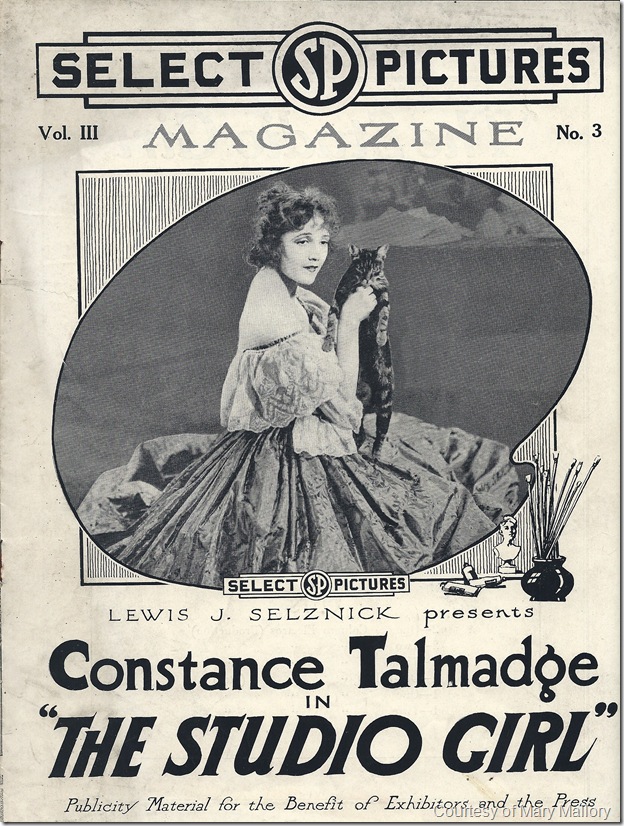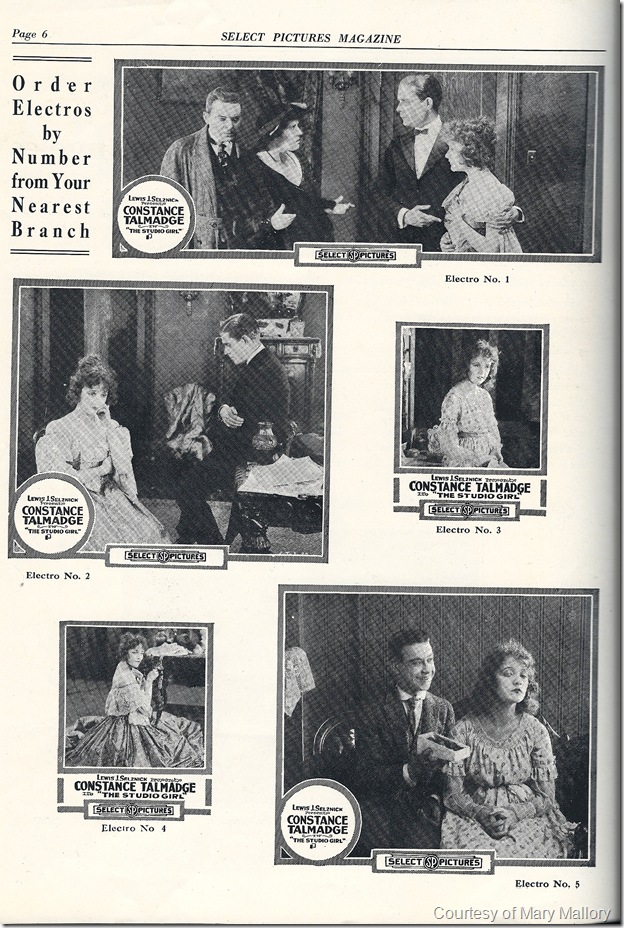
From the beginning of the motion picture industry, film companies devised all types of advertising to entice consumers to buy movie tickets. Posters, lobby cards and window displays, glass slides, sheet music and photographs could be employed by exhibitors to lure patrons to see new moving pictures. But how did theater owners learn about promotional materials to help grow their profits?
Film companies first employed bulletins to sell prints for exhibition in theaters. These one-page documents provided detailed synopses of films, their lengths, and cast lists to help entice theater owners to buy prints. The bulletins sometimes suggested ideas for lectures to accompany films, or other film titles that would help round out an entertaining program. These documents were all about selling product, first to exhibitors and then consumers.

As the motion picture industry developed, more sophisticated means were created to sell exhibitors on new films. By the mid-1910s, motion picture companies and studios developed pressbooks or exhibitor campaign books that functioned as catalogs, in which exhibitors could purchase key art and other materials to promote upcoming films.
Studios developed individual books for each film they produced, showing a panoply of posters, lobby cards, photographs, glass slides, music, and other disposable marketing materials that theater owners could purchase. Though often lavishly produced, these mass-produced advertising materials simply disposable products tossed aside each week in order to publicize the next week’s new movie.
Lewis J. Selznick’s Select Pictures published what it called magazines to promote each of its films. Published with volume and issue number like a typical magazine, they listed advertising materials for sale as well as provided stories to disseminate to local newspapers.
One full page presented photographs of different size posters available. Another publicized star cuts for newspaper reproduction, while another revealed lantern glass slides with suggested tag lines. Other pages in the booklet contained feature stories, column items, synopses, even interesting tidbits that newspapers could freely publish as is, or rewrite to their own tastes.
As the studio wrote on Page 4 of the magazine, “To Our Exhibitors: The material in these booklets has been written primarily for your use in securing local publicity. Cut out the various little stories, synopses, and other bits of interest, and hand them to your local newspapers. Have them use these “stories” immediately preceding and during the run of Select Pictures at your theater.”
The magazine for Constance Talmadge’s 1918 film “The Studio Girl” offered four synopses that could be employed by newspapers, along with items they called “ready-to-clip press matter.” These detailed problems that occurred during production, such as weather delays, minor issues with the police and other such tales.
For 10 cents each, exhibitors could also purchase portraits of Select stars as well as publicity stills of each production from local exchanges to help heighten public interest.
These pressbooks grew more sophisticated as the film industry matured. Studios devised new methods of ballyhoo to promote films, such as ideas for contests, window displays in local businesses that tied in with a film’s theme, souvenir give-aways, tie-in products, and even lobby decorations and displays.
With the demise of the studios’ monopoly in the late 1940s, less pressbooks were manufactured, and by the 1980s, they totally disappeared.


Love it! I wish I could find a few of these for Dorothy Gish! Another excelent piece Mary!
LikeLike
Mary, thanks for this bit of insider’s history.
I never realized that the studios prepared ad catalogs for their films, especially this early on. But, why not? Other industries did similar promotions. Press kits for automobiles were common, and worked on the same principle. Manufacturers provided photos and advertising copy that the dealer could use with the local newspaper and printer to promote the manufacture’s vehicle. In the automotive world, the press kits, as was also true of the car’s sales brochure, were printed before the actual final version of the car was released for sale, so there are often differences between the printed matter and the final product. I wonder if the same was true in the film world? Were some of the descriptions and photos different from the final edited film that was released? That would make an interesting research project on a given film.
LikeLike
Alan, Yes,many press kits and pressbooks contained photos from scenes cut from the film, along with synopses that differed from final story, etc. I’ve seen plenty of photos from scenes cut from the films. Sometimes they also made mistakes in printing, and how to pull material back as well.
LikeLike
Pingback: WVU Libraries News | WVU Libraries